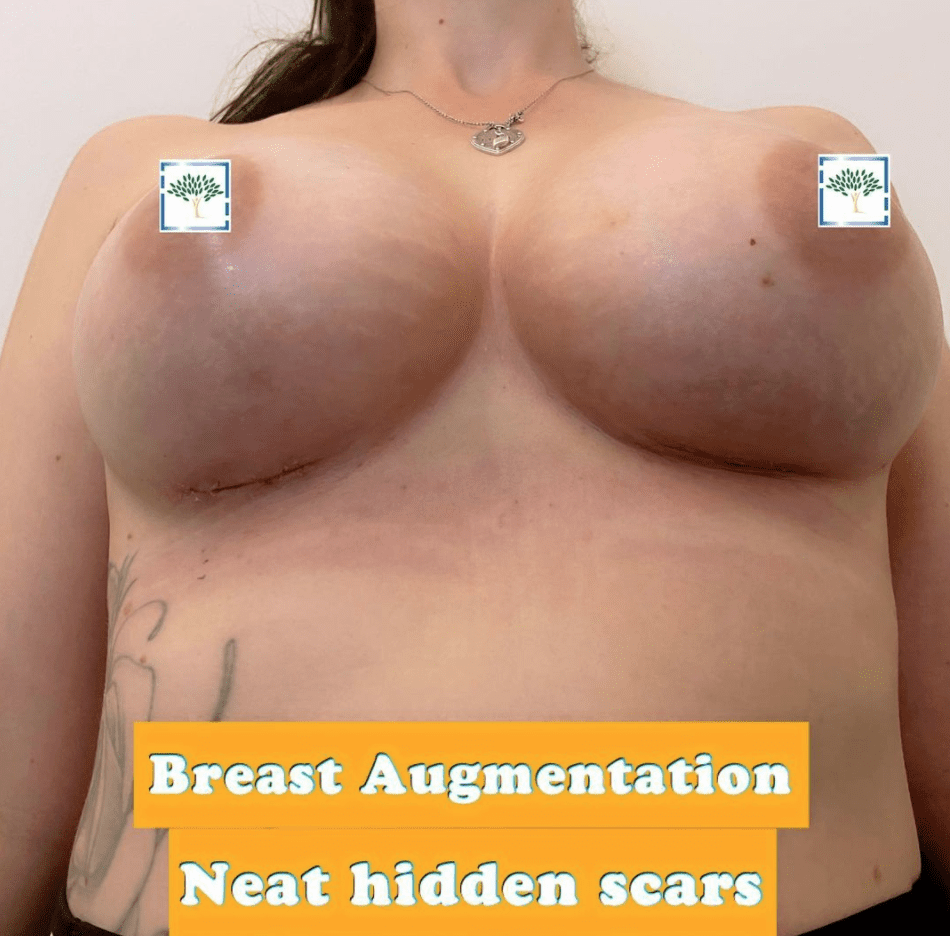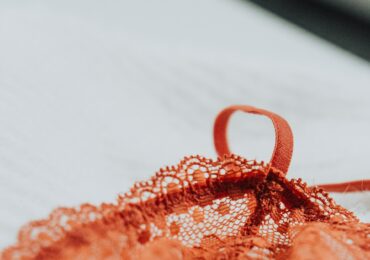Every year, plastic surgeons around the country perform thousands of breast augmentation procedures. One of the biggest worries patients have about getting breast implants is how visible the scars will be after surgery. Because breast augmentation is a surgical procedure, scarring is inevitable. If you’re wondering what do breast augmentation scars look like, here’s what you need to know and how to optimise boob job scar healing.
What Do Breast Augmentation Scars Look Like?
The location of your scarring depends on the placement of the incisions that your plastic surgeon uses to insert breast implants. The most common incision placement is within the inframammary fold, which is the crease on the underside of the breasts. This technique uses two incisions under the natural curve of the breasts, making it easy to conceal the scars in a bikini top.
Because of the location of the incisions, your scarring should be in easily visible locations. Scarring near the areola is easy to conceal with a bra, and scarring underneath the breasts can also be hidden with clothing or a bra. It’s important to know that with any surgery that makes incisions, such as a boob job, that there will be scarring. But, with breast enlargement, there should not be excessive scarring as the incisions are relatively thin.

It’s important to know that it takes some time for your scars to heal. In the beginning, they tend to look red and slightly raised. As you continue to heal, your scars will begin to turn pink, then gradually fade over time. Eventually, the scars should turn to white, and the texture of the scar will also change as your body heals. When the scar is healed, it should be flat and no longer raised. Although breast augmentation or boob job scars are not invisible, a great plastic surgeon is able to create neat and well-concealed scars.
Your scars can take up to 18 months to fully recover. It’s common for scarring to look a little worse before it starts to get better. Over time, your scars will appear less noticeable. A few different factors play a role in your scar healing, like age, genetics, sun exposure, and skin tone.
10 Tips for Minimising Breast Augmentation Scars
If you’re thinking what do breast augmentation scars look like and will they be obvious? The answer is that you can do plenty of things to minimise the appearance of breast augmentation scars. Here are 10 tips for promoting healing and reducing the appearance of scarring after getting breast implants.
1. Avoid Smoking
Avoid smoking for several weeks before and after your surgery. If you can, it’s a good idea to quit altogether. Smoking reduces blood flow and can affect how your body fights off infection. This means that it can impact your healing and affect the type of scarring left. Smoking also significantly increases your risk of complications after surgery, so it’s crucial that you avoid smoking both before and after your boob job surgery.
2. Stay Out of the Sun
Your new scar tissue has less protection against sun exposure. So, if you go out in the sun, it can make your scar darker and sunburn more easily. After surgery, it’s best to avoid sun exposure altogether. If that’s not possible, use a high factor sun cream for several months after your surgery. Your scars are sensitive to sun damage and can burn easily.
3. Follow a Healthy Diet
Eating a healthy diet with lots of nutrients, vitamins, minerals, and protein helps to give your body everything it needs to heal quickly and create new tissue. To help you eat properly after your procedure, prepare plenty of healthy food and snacks before your breast augmentation surgery so you can begin to regain your strength and support your boob job recovery. Dr Riaz Agha talks about the importance of nutrition in cosmetic surgery in the video below.
4. Drink Plenty of Water
During your recovery, drink plenty of water to promote healing and improve the elasticity of the skin. If you’re dehydrated, it can impact your skin health and the healing process. After your procedure, drinking plenty of water helps remove the anaesthetic and toxins from your body. It will kickstart your recovery on the best route possible.
5. Monitor Your Boob Job Scar Healing
Throughout your recovery, keep an eye on your scar and monitor your healing progress. You should speak to your plastic surgeon immediately if you have any concerns.
6. Gentle Massage
Once the scab has disappeared completely and fallen off on its own, you can gently massage the area. This can help to soften and flatten your scar. Massaging the area also helps to increase circulation and soften the scar tissue.
7. Stick to Your Surgeon’s Aftercare Instructions
It’s essential to stick to your surgeon’s aftercare instructions as closely as possible for proper healing. Your surgeon will give you clear instructions on what to do, how to wash, and how to change the dressing on your incisions. Your surgeon will also advise you on any creams and oils you can use further along your recovery period to reduce the appearance of scars. Following your surgeon’s breast augmentation aftercare instructions not only impacts your scar healing but reduces your risk of infection and complications. The instructions are in place for a reason, and it’s vital that you stick to them.
8. Apply Silicone Tape
In general, surgical incisions have a breathable tape dressing applied. Once your doctor gives you the all-clear, you can start using silicone tape, a topical scar treatment that helps with the healing of scars. It delivers silicone to the area and improves the appearance of the scar over time. You can apply the tape at home, shower with it, and change it weekly. We’ve put together a quick guide on how silicone tape works and when to use it in your breast augmentation recovery timeline.
9. Avoid Exfoliating Your Skin
While it can be tempting to jump back into your normal skincare routine, the skin around breast implant scars is sensitive. Avoid exfoliating or creating excessive friction on the skin while you’re in the early stages of healing. For instance, avoid scrubbing the area dry after showering. Instead, gently pat your breasts dry.
10. Avoid Heavy Lifting After Breast Augmentation Surgery
The recovery advice will be similar whether you have a breast lift, breast reduction, or breast implants. Avoid any heavy lifting during your breast augmentation recovery until your surgeon says it’s ok to do so. That means heavy bags, children, and exercise. Lifting something heavy while you’re healing could result in the wound opening further and impact the appearance of your scars.
How To Optimise & Reduce Scars After An Operation at The Harley Clinic London
It’s completely normal to wonder what breast augmentation scars look like as it will play a part in your decision to have cosmetic surgery. The bottom line is that you need to give your body time to heal, so it’s crucial that you are patient and give yourself time to get back to full energy. It’s essential that you speak to a skilled and experienced plastic surgeon to achieve the best outcome.
To book a consultation today at our Harley Street Cosmetic Surgery, please call 0203 582 4947 or email The Harley Clinic at [email protected].













